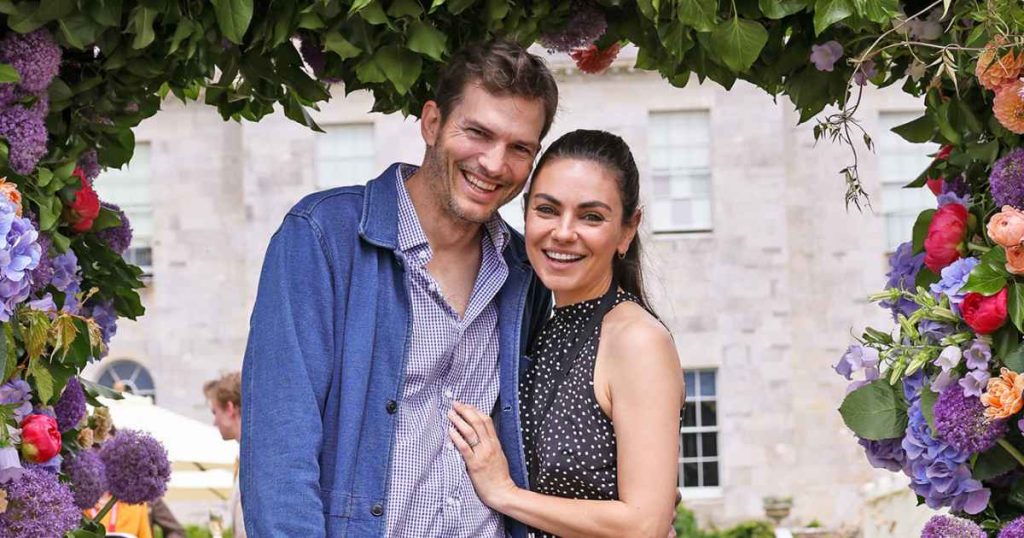Mila Kunis’s journey of self-discovery regarding her Jewish identity has been profoundly influenced by her husband, Ashton Kutcher. In a recent conversation with activist Noa Tishby, Kunis candidly revealed how Kutcher’s own embrace of Judaism, not by birthright but by choice, sparked a renewed connection to her heritage. This revelation offers a unique perspective on interfaith relationships and the evolving nature of religious identity in the modern world. Kunis’s initial surprise at Kutcher’s decision to convert to Judaism stemmed from her own experience growing up in a society where religious expression was suppressed. This suppression instilled in her a sense of detachment from her Jewish roots, leading her to perceive it more as a cultural heritage than a religious practice. Kutcher’s explanation of Judaism’s flexible and adaptable nature resonated deeply with Kunis, allowing her to explore aspects of the faith that personally resonated with her without feeling constrained by rigid dogma.
Kutcher’s Jewish journey, rooted in the practice of Kabbalah, has been a significant force in his life for many years. He has openly discussed how its principles have guided him and provided a framework for navigating challenges. Even during his previous marriage to Demi Moore, Kutcher emphasized the role of Kabbalah in their relationship, portraying it as a source of strength and resilience. This established foundation likely played a role in his ability to articulate the tenets of Judaism to Kunis in a way that demystified the religion and made it accessible to her. This dynamic highlights the profound impact that a partner’s spiritual beliefs can have on shaping one’s own understanding of faith and heritage.
Growing up in what is now Ukraine, Kunis was discouraged from openly acknowledging her Jewish identity. This experience fostered a sense of cultural connection but limited her engagement with the religious practices of Judaism. The suppression of her religious expression left a lasting impact, manifesting in feelings of guilt and anxieties related to scarcity, particularly concerning food. This association of food with security, deeply ingrained from childhood, continues to influence her adult life and parenting style. The childhood experiences shaped her perspective on Judaism, creating a divide between cultural familiarity and religious observance. This separation was further reinforced by the societal constraints she faced, preventing her from fully embracing her heritage.
Kunis’s path to rediscovering her Jewish heritage took a significant turn with the arrival of her children. Motherhood awakened in her a desire to connect with her roots and provide her children with a sense of belonging. She began incorporating Jewish traditions into her family life, such as lighting Hanukkah candles and observing Shabbat, rituals she hadn’t practiced before. This transformation highlights the powerful role that parenthood can play in shaping one’s relationship with religion and culture. It also underscores the desire to transmit heritage and values to the next generation, often leading to a deeper exploration of one’s own background.
Kunis’s evolving relationship with Judaism is further evidenced by her willingness to learn and seek guidance, even from her husband. During the Hanukkah candle-lighting ceremony with Noa Tishby, Kunis readily consulted Kutcher for clarification on the proper procedure. This simple act demonstrates her openness to embrace the traditions she is still learning. It also underscores the supportive partnership she shares with Kutcher, where they can learn from and guide each other in matters of faith and culture. This interaction reveals a dynamic where religious knowledge is shared and celebrated within the family, fostering a sense of shared exploration and understanding.
The anecdote of Kunis calling Kutcher for guidance during the Hanukkah candle-lighting ceremony playfully highlights the evolving nature of their relationship with Judaism. It showcases a comfortable and open dynamic where both partners actively participate in the learning process. This scene encapsulates the essence of Kunis’s journey: a blend of rediscovering her own heritage, embracing new traditions, and finding support and guidance in her partner’s chosen faith. It’s a story of personal growth, cultural reconnection, and the unexpected ways in which love and partnership can shape our individual identities. It also serves as a reminder that religious observance can be a flexible and evolving practice, adaptable to individual needs and preferences.

